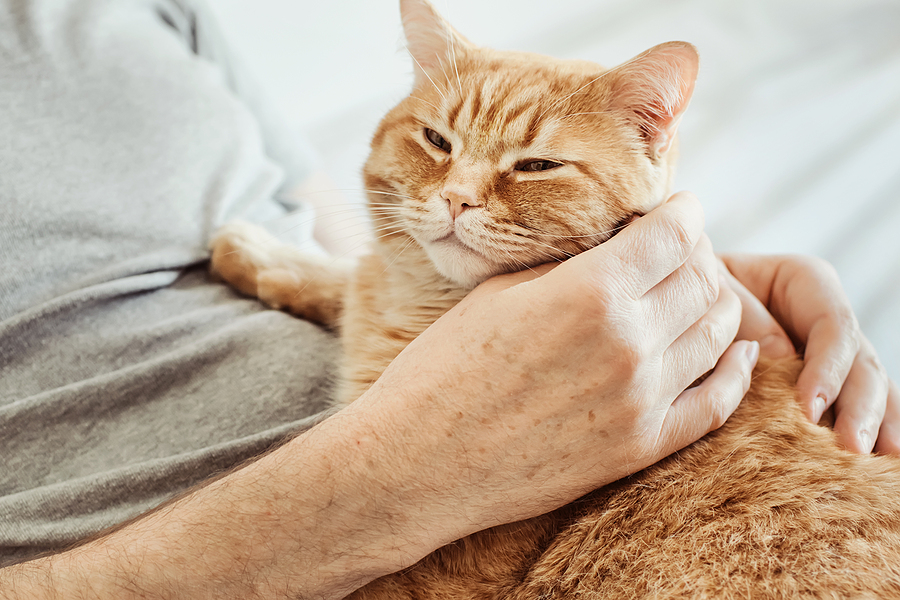Is it really love? When cats purr, what are they trying to tell us?
First, how do they do it? It’s surprising that cats have no special apparatus in their body to enable them to purr. Purring involves the rapid movement of the muscles of the larynx (voice box), combined with movement of the diaphragm (the muscle at the base of the chest cavity). The muscles move at around 20 to 30 times per second.
As the cat breathes, air touches the vibrating muscles, producing a purr. Each cat’s purr is as unique as our own fingerprints. Some cats offer higher pitched purrs and others emit a low baritone rumble. Some purrs are so faint you have to be extremely close to your cat to hear it (but still you can feel the vibrations) while others purr so loudly that they might be mistaken for a car motor. Some cats rarely purr, while others are purring machines.
While mother cats purr to help newborn kittens to find them, and kittens purr back and sometimes a pair of cats grooming one another will purr, purring has evolved mostly as a Valentine to humans.
For whatever reason, we like it when cats purr, and cats learn this. The cat purrs, and the cat receives attention. One study essentially demonstrates that cats use purrs (and meows) to train their humans to get what they want. Certainly, by getting what they want, cats benefit by purring.
However, it seems one reason why people like it when cats purr is because it’s no different than having someone you love say “I love you, too.” Our interpretation of purring makes us feel good.
However, the benefit likely goes way beyond that. Studies demonstrate that the frequency and sound and feeling of the average purr has a positive impact on endorphins in humans and lowers levels of the stress hormone, cortisol. And purring cats encourage us to pet our cats, and petting companion animals is beneficial to our health.
It’s also likely that purring has a calming effect on cats themselves. It’s not likely that domestic cats began to purr to support human health, but more to support their own health. Our close association with them makes us beneficiaries, too.
Veterinary professionals can attest that cats in horrible pain and even on their death beds often purr. Sometimes cats purr when experiencing a veterinary exam, but Fear Free certified professional veterinary technicians, nurses, and veterinarians recognize that when everything else about the cat’s body language suggests the cat is uncomfortable, if not downright fearful, then purring is a “natural drug” cats employ in an attempt to calm themselves.
Like everything about cats, purring can be both nuanced and misunderstood, but the bottom line is that purring intensifies the human-animal bond. And maybe purring truly is also an expression of your cat’s love.
This article was reviewed/edited by board-certified veterinary behaviorist Dr. Kenneth Martin and/or veterinary technician specialist in behavior Debbie Martin, LVT.
Steve Dale, CABC (certified animal behavior consultant) has written and contributed to many books about pets; hosts three radio shows; contributes to Veterinary Practice News, CATSTER and others; is on the Board of Directors of the Human Animal Bond Association and Winn Feline Foundation, and is chief correspondent for Fear Free Happy Homes. He speaks at conferences worldwide. His blog: www.stevedale.tv
Want to stay in the loop on the latest and greatest in keeping your pet happy and healthy? Sign up for our free newsletter by clicking here!








